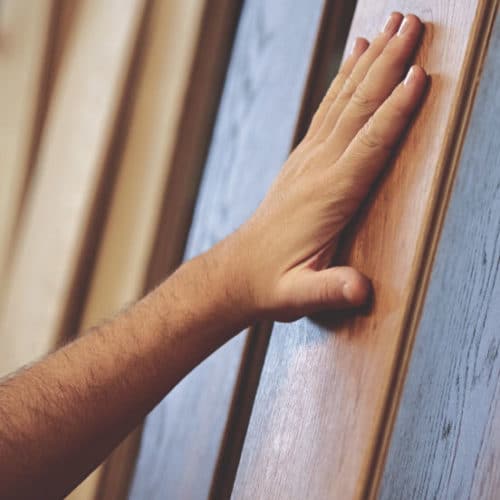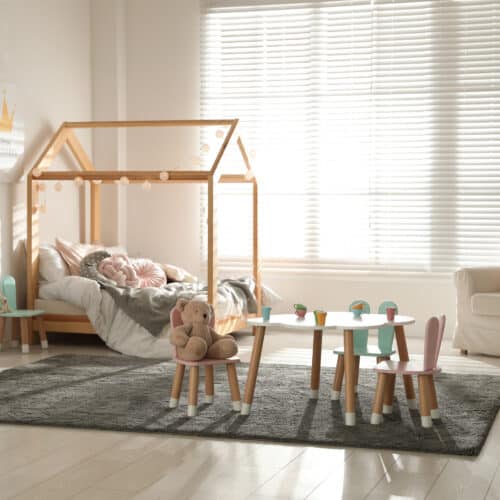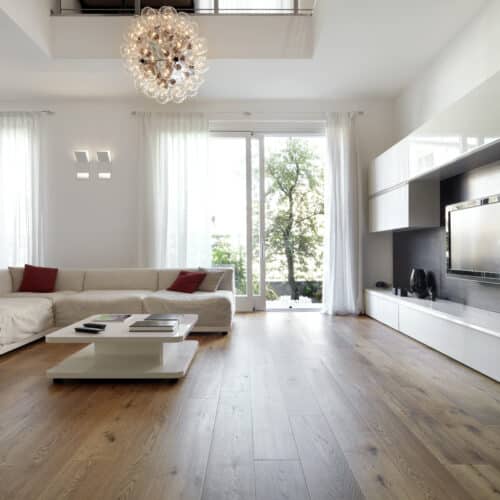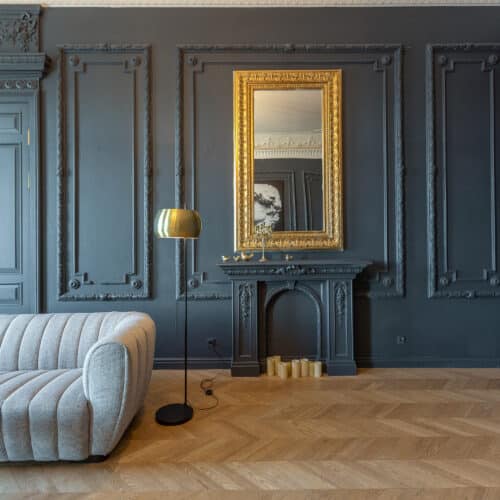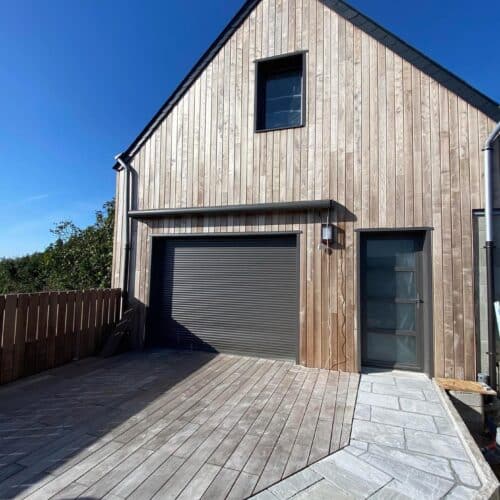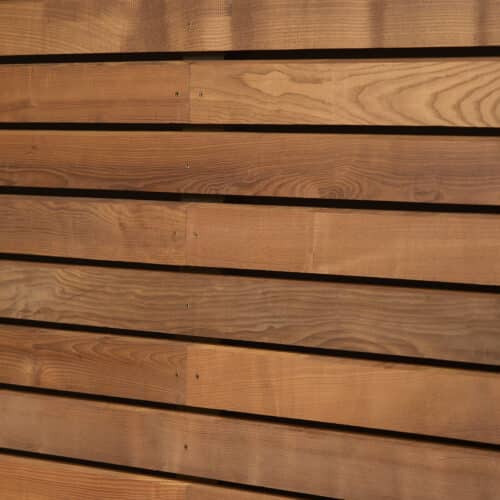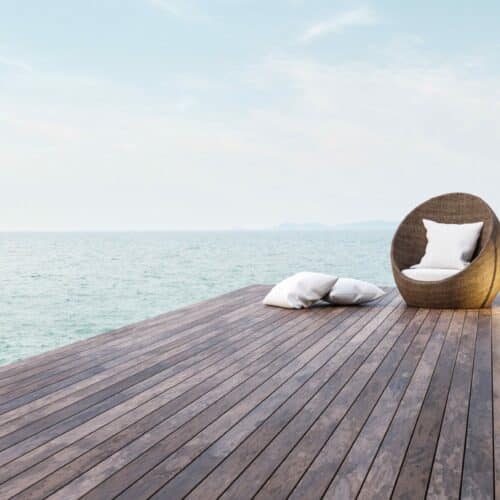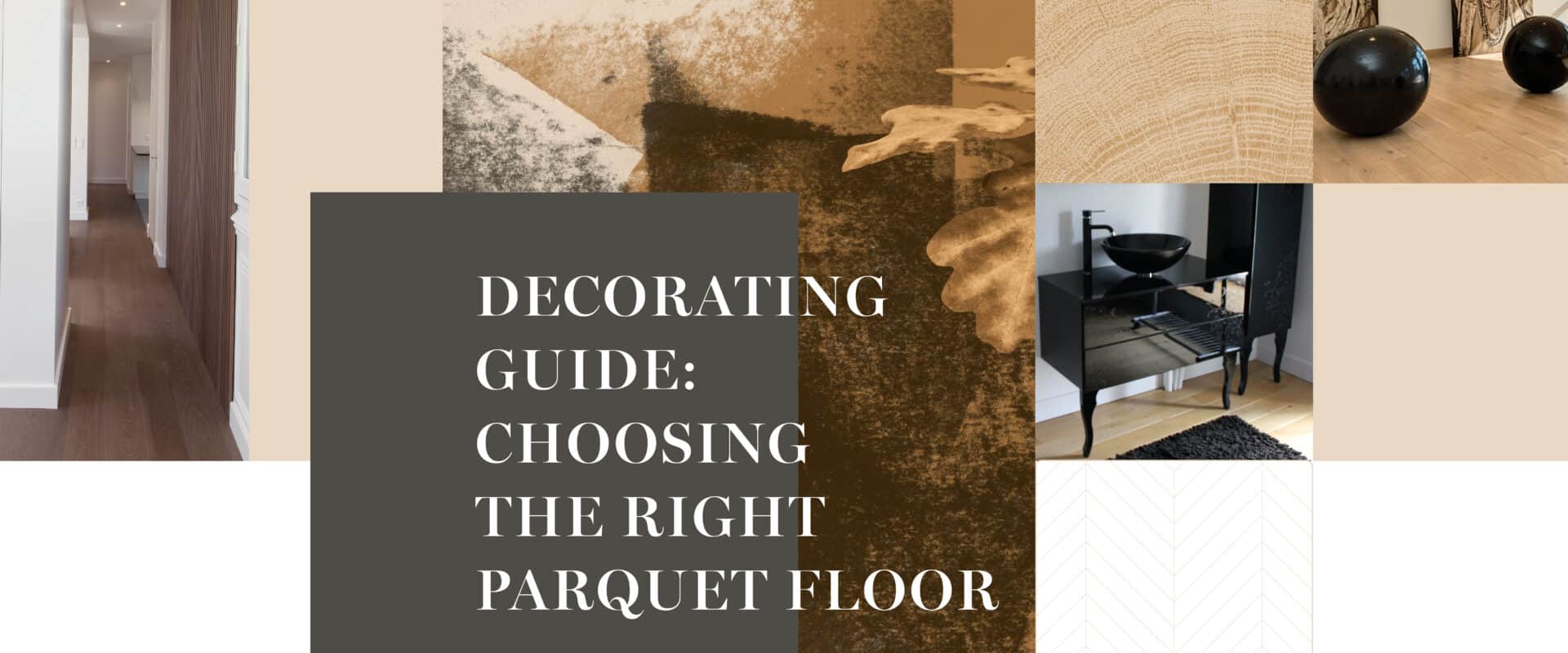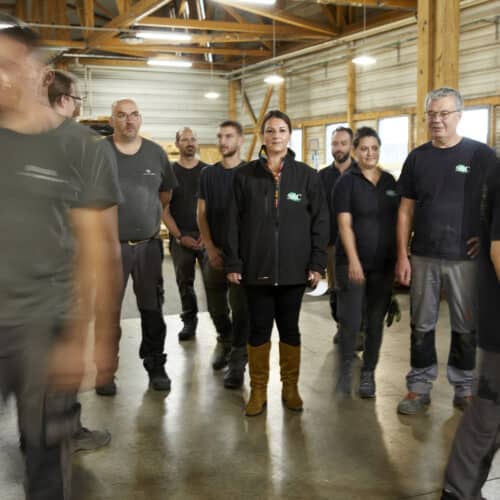Solid, semi-solid or laminated…
Which surface is right for your project?
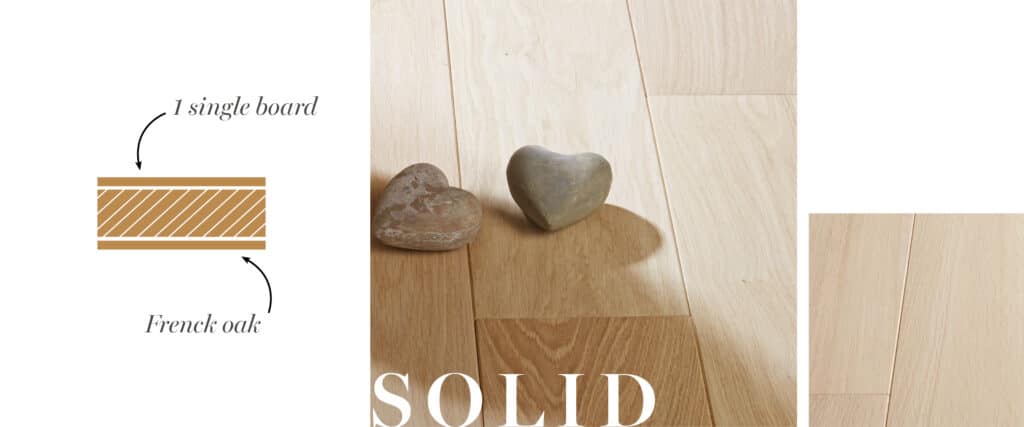
Solid
A solid parquet floor is made up of a single element (a single piece), machined from a single plank and comprising the same wood species: Oak. There’s nothing more traditional and authentic than a solid parquet floor. Solid parquet is a lasting investment. It offers excellent quality, is easy to maintain and restore, and is hard-wearing every day.
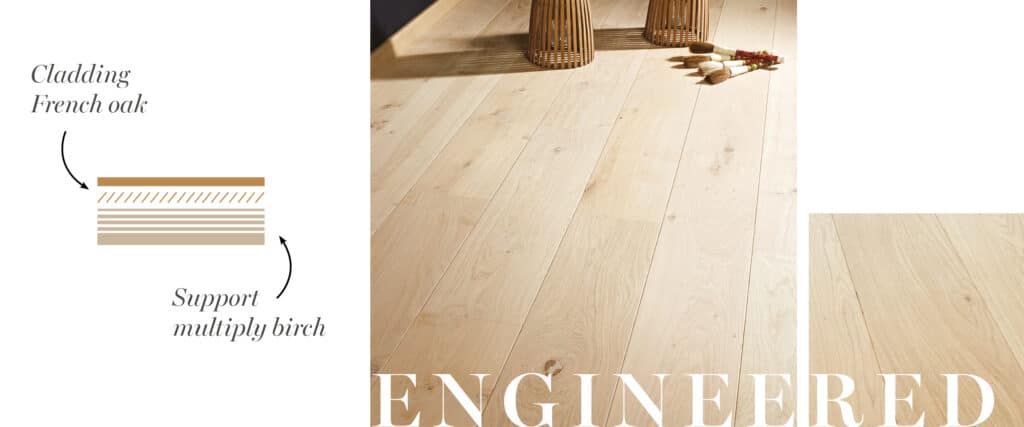
Engineered
Enjoy a compromise between durability and flexibility with semi-massive parquet. This type of parquet is similar in appearance to solid parquet, but is less sensitive to damp. It is made up of 2 layers of wood glued together, the last of which, called the “facing”, is made of a noble species of oak. The subfloor is made of birch multi-layer to provide great stability, with a more partial renovation capacity, it offers very good quality at an intermediate cost.
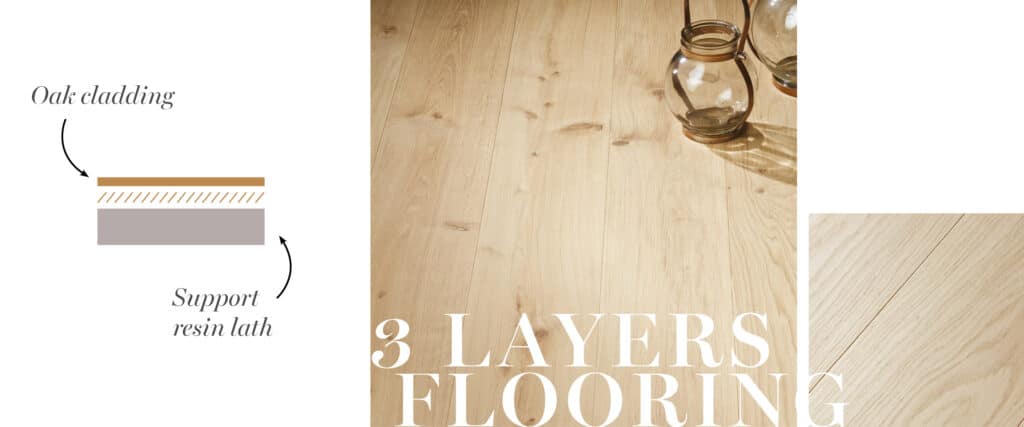
3 layers flooring
Engineered parquet is made up of three layers: a top layer of fine wood that gives the parquet its appearance, and two bottom layers: the core and the backing, which provide strength and stability to the floor. Although less durable than solid wood, it offers good quality and moisture resistance at a more affordable price. What’s more, it’s easier to lay, with no need for glue or nails.
Discover our range of engineered parquet floors

Does the thickness of a parquet floor matter? Does it complicate the installation of my floorboards?
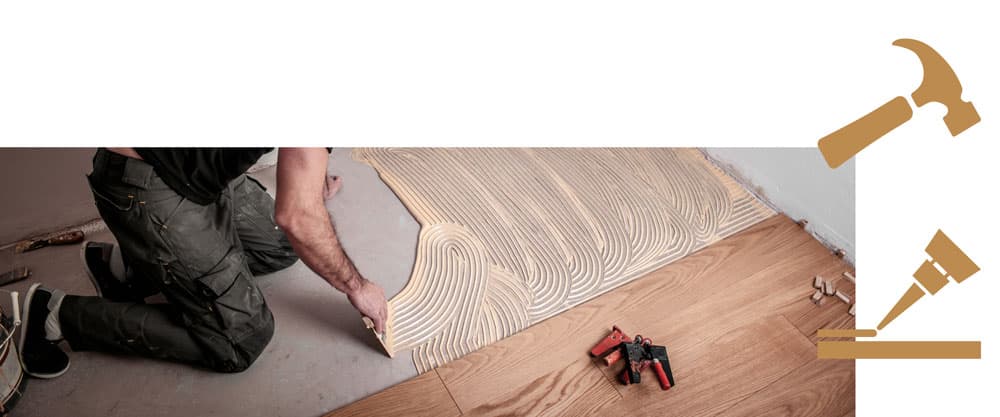
Choosing the right thickness of parquet is crucial, influencing not only aesthetics but also the installation method. Here’s a detailed analysis to help you make the best decision:
Nail-down installation – Solid parquet (21 mm)
Recommended for traditional installation, the 21 mm thickness ensures a robust, durable floor, particularly suited to wider boards when nailed down. Nail-down installation raises the floor level by between 50 and 100 mm depending on the thickness of the parquet. This type of installation makes it easy to remove a floorboard if required, although it is more susceptible to warping and is more complex. Each plank has a tongue-and-groove profile and a tongue-and-groove system.
Glued-down installation: Solid (14 mm) or Semi-Solid (15 mm and 21 mm) parquet :
Compatible with all types of parquet, glue-down installation provides stability and resistance in high-traffic areas. As the planks are glued directly to the floor, this provides effective noise reduction as well as holding the wood in place. The planks do not warp easily in the face of humidity, air, temperature, etc. However, this type of installation is not suitable for (basic) damp areas, and the installation process requires skill, although it is more affordable than nail-down installation. The biggest drawback is that glued boards cannot be easily removed without being partially destroyed.
Floating installation – Engineered parquet (11 mm and 14 mm) :
Floating installation is the simplest type of installation, with its clip system and no need for additional fixings. It’s also very quick to lay, suitable for different types of floor and the cheapest of all. However, this type of installation is less effective at insulating against noise and damp than glued-down installation.
Blade profile: tongue and groove
Tongue and groove jointing refers to a joining technique used to connect boards along their length using an interlocking system. This method involves creating a groove (mortise) along the length of the thickness of the board, into which is inserted a tongue (tenon) also cut along the length of the opposite piece, generally equivalent to 1/3 of the thickness of the board. This is a type of edge-to-edge joint.
Advice :
– Consider the nature of the existing substrate.
– Assess the constraints associated with door heights and transitions with other floor coverings.
– Consult the installation specifications and recommendations carefully.

A parquet floor with wide and thin boards…
Can I mix the widths?
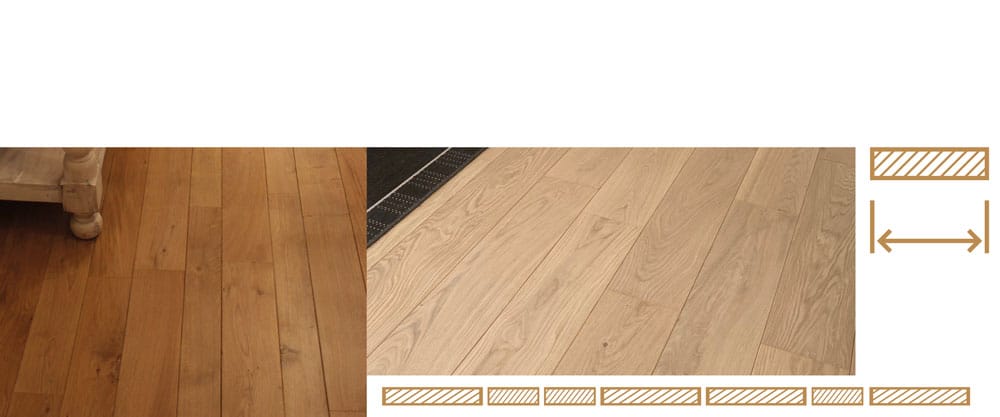
Choose the width to suit your style preferences.
Thin slats can bring elegance and modernity to your room, and are generally preferred in smaller spaces to give an impression of volume. However, they can also be installed in a large room to give a more formal, classic style, as in châteaux and grand old houses. Be careful not to create an overcrowded effect.
Medium-width planks for a neutral style: if you’re not sure what size plank to choose, go for a safe bet: select medium-width planks, i.e. between 12 and 15 cm wide. Standard-size floorboards offer a warm, classic look. This makes them suitable for almost any style and surface area.
Wide planks give an authentic effect, highlighting the essence, patterns and colour variations of the wood, while a wide-plank floor with a patina finish enhances the warm, rustic feel. You can achieve a contemporary, modern and comfortable look with an oiled finish, or a vintage, retro look with smoked and distressed strips, as offered in our catalogue.
Planks can be mixed and matched for a French style installation.

Rustic, uniform, uneven or smooth…
Wood’s aesthetic appeal is all its own. But what’s the difference?
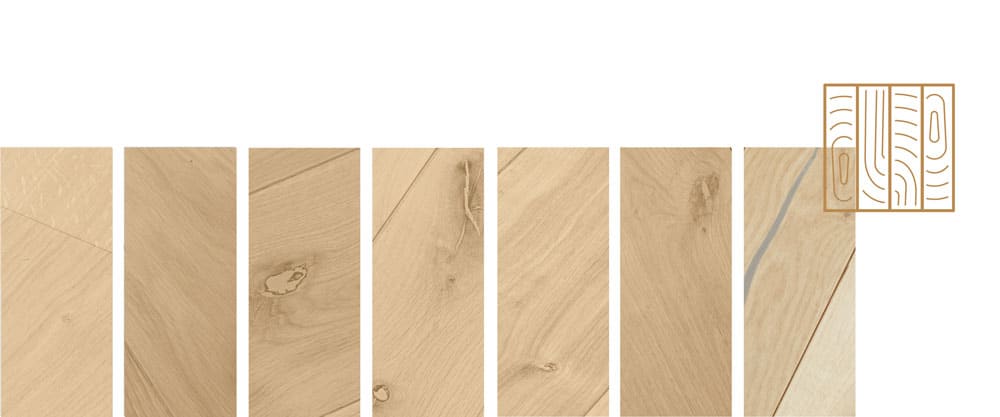
Our parquet floors range from the least knotty to the most rustic. These are classified by category (Premier, Premier Bis, Rustique B, Rustique C) from the smoothest to those with the most asperities. Flooring in the “Premier” category offers a regular, even finish, with no knots or sapwood, while that in the “Premier bis” category is similar, with some irregularities. Wood in the Rustic B category features a few natural irregularities, including some sapwood, while the Rustic C category highlights the natural aspect of the floor, with a larger proportion of natural defects that give it its charm.
Opt for wood with few knots and uniformity for a modern look, or choose a more rustic and heterogeneous option for a classic or traditional style.

Bâton rompu, English, French…
The geometry of the laying influences the final result.
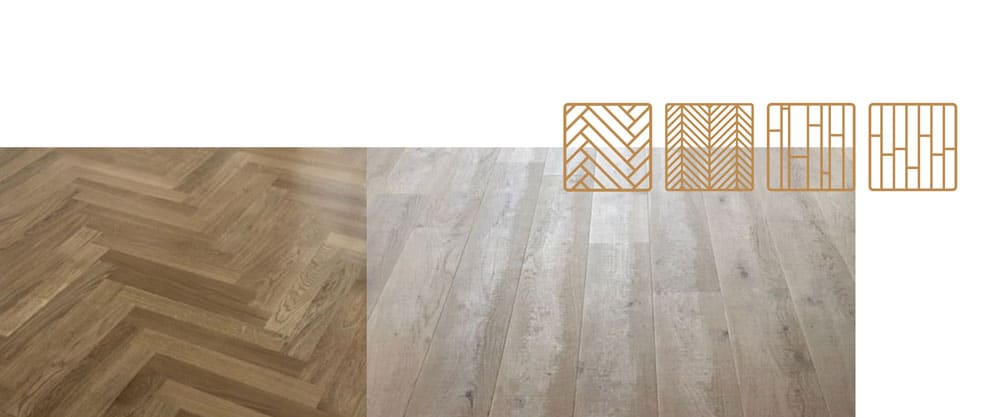
English style installation
The boards are laid in a straight line, end to end, creating a smooth, even surface. Classic and timeless.
ADVANTAGES
Easy to install, gives a clean, elegant appearance.
French style installation (mix of 3 widths)
A mix of planks in three different widths to create a distinctive pattern. Rustic and traditional, adding warmth and charm.
ADVANTAGES
Adds character, can hide small imperfections in the floor.
Broken stick installation
The planks are laid at right angles to each other, creating a herringbone pattern. Elegant and sophisticated, it adds a contemporary touch.
BENEFITS
Visually appealing, creates the illusion of width in the room.
Each installation style offers a unique aesthetic, and the choice generally depends on the design you wish to achieve in your space. Don’t hesitate to ask SRC Parquet for samples or further advice to help you visualise and choose the installation that best suits your project.

Natural, coloured, glossy or matt…
The colour you choose and the structure of the wood complement each other. What do I want my project to look like?
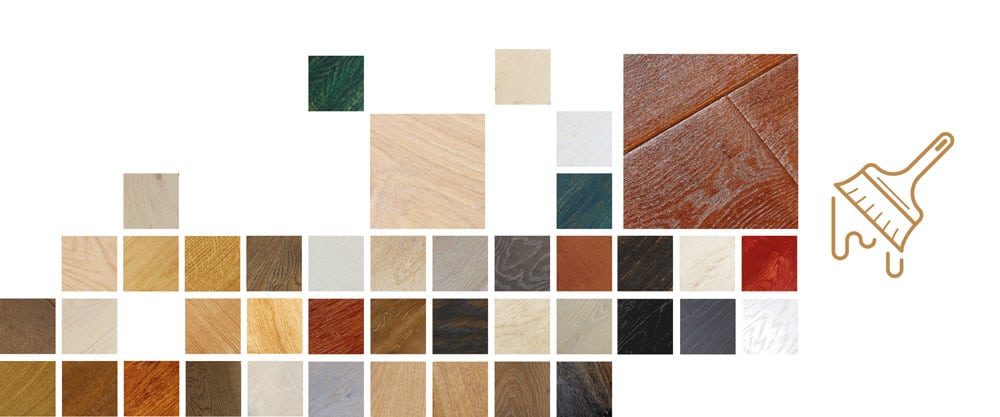
Personalise the ambience of your space by choosing from natural, deco, artist, vintage, etc.
Discover all our finishes
At SRC Parquet, we simplify your parquet selection experience. Don’t hesitate to ask our experts for personalised advice!
